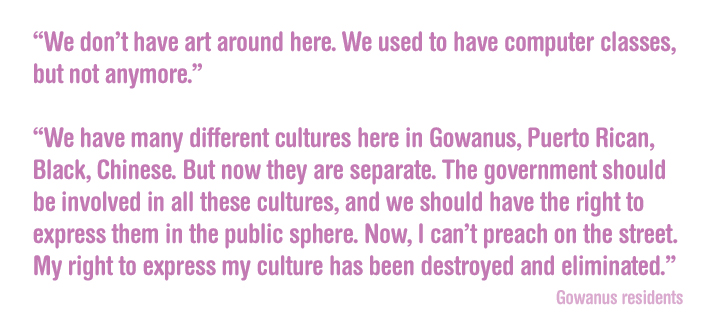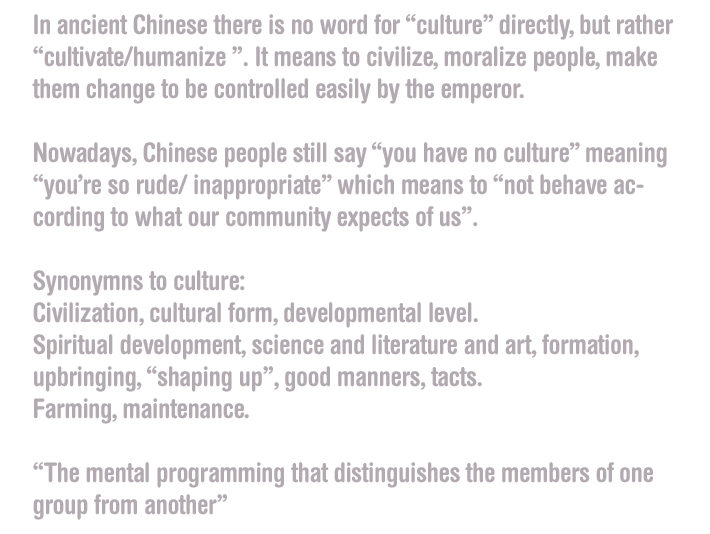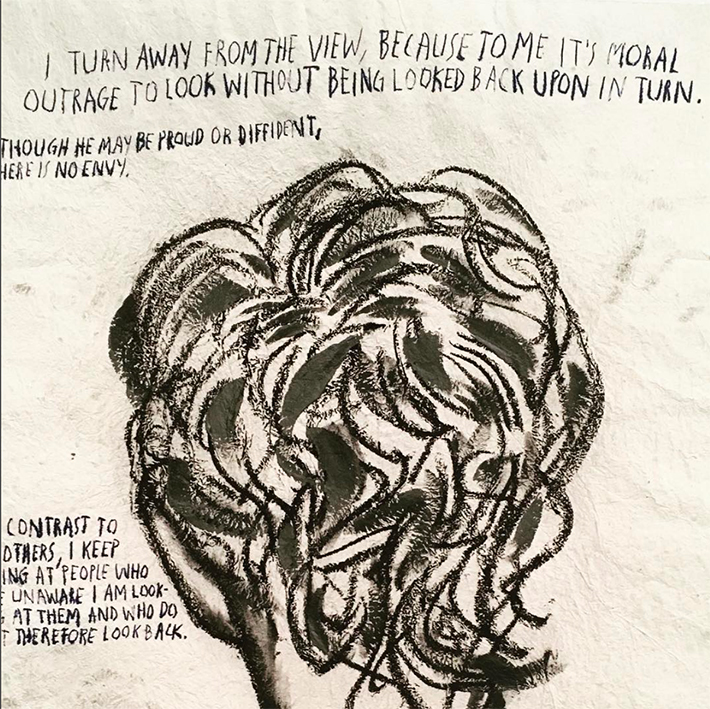The design field is one in transition – moving from its traditional role of aesthetics and communication, oftentimes acting as the link between a client and a consumer – and one of a an actor within the emerging field of social innovation.
Though design, with its in-depth knowledge of understanding human behavior and perception and giving form to abstract ideas in a specific context, without a doubt has a lot to contribute to social change work, it is also a field with a lot of catching up to do in terms of acknowledging and understanding power structures and social tensions involved in any attempt at intervening in complex social contexts.
During the Intensive arranged by the Transdisciplinary Design program at Parsons, we were given a brief that exemplified many of the problems I see in the traditional design approach to social change.
The brief read as follows:
“Imagine you have been hired by your client to figure out ways to better connect residents of the Gowanus neighborhood in Brooklyn to more cultural resources, venues, and opportunities. Because this initiative is part of an equity-focused agenda, there is a particular focus on residents with lower incomes.”
We were further encouraged to make models of complex systems that demonstrate complexity and causality related to empowerment and oppression, and then suggest intervention points, or levers of change.
This, to an untrained eye, might seem all good. There´s an awareness of inequity there, empowerment and oppression are mentioned, and a desire to equalize opportunities. What this brief is missing though, something which is a common mistake in social interventions written by the more powerful actor whether this is a government agency, a large non-profit or a design agency, is a process of inquiry into the very fundamentals of the problem, ones own assumptions, the meaning of the concepts involved from different angles, and the relationship/s between the recipients of the intervention and the actor in charge of the resources.
A place to start to understand the problem better, is by asking: What is ‘culture’? Do we we have a shared understanding of this basic concept? We asked a few members of the community we were assigned to intervene in.

What is ‘a cultural resource’?

What does it mean to be connected to ‘cultural resources, venues and opportunities’?

Zooming out on more general definitions of culture from the countries me and my team members are from, we see the oftentimes oppressive idea of culture emerge, a means of spreading a majority culture to those that for whatever reason are not included.

Another important question to ask: who is the client and why is this client “invisible”, all focus of the brief put on the community we are there to “help/improve”?

This principle I think is expressed very eloquently by this piece by Raymond Pettibon: “I turn away from the view, because to me it is moral outrage to look without being looked back upon in return”.

So what would be an alternative starting point to the brief?
According to the Conflictual Harmony lens, one key to successful intervention, is to first of all “zoom out” and look at the larger system which also includes you and whatever agent you are representing. In this case, who is the client? What relationship do they have to the issue and the community at hand? What political affiliations/purposes/goals do they have? What are their understanding of culture and the needs around it, and how does this differ from the various perceptions of the community? Could these perceptions be mapped and a common ground found, or a shared definition of the problem and the opportunities at hand? What are current expressions of culture within the community that could be leveraged? Could a purpose be found to direct the cultural resources towards that fulfills both the needs of the community and the public contract of the client?
Out of an analysis done right, purposeful creativity comes naturally. Out of the true meeting between different perspectives comes true innovation.
Sign up to receive notifications of new posts via e-mail.
